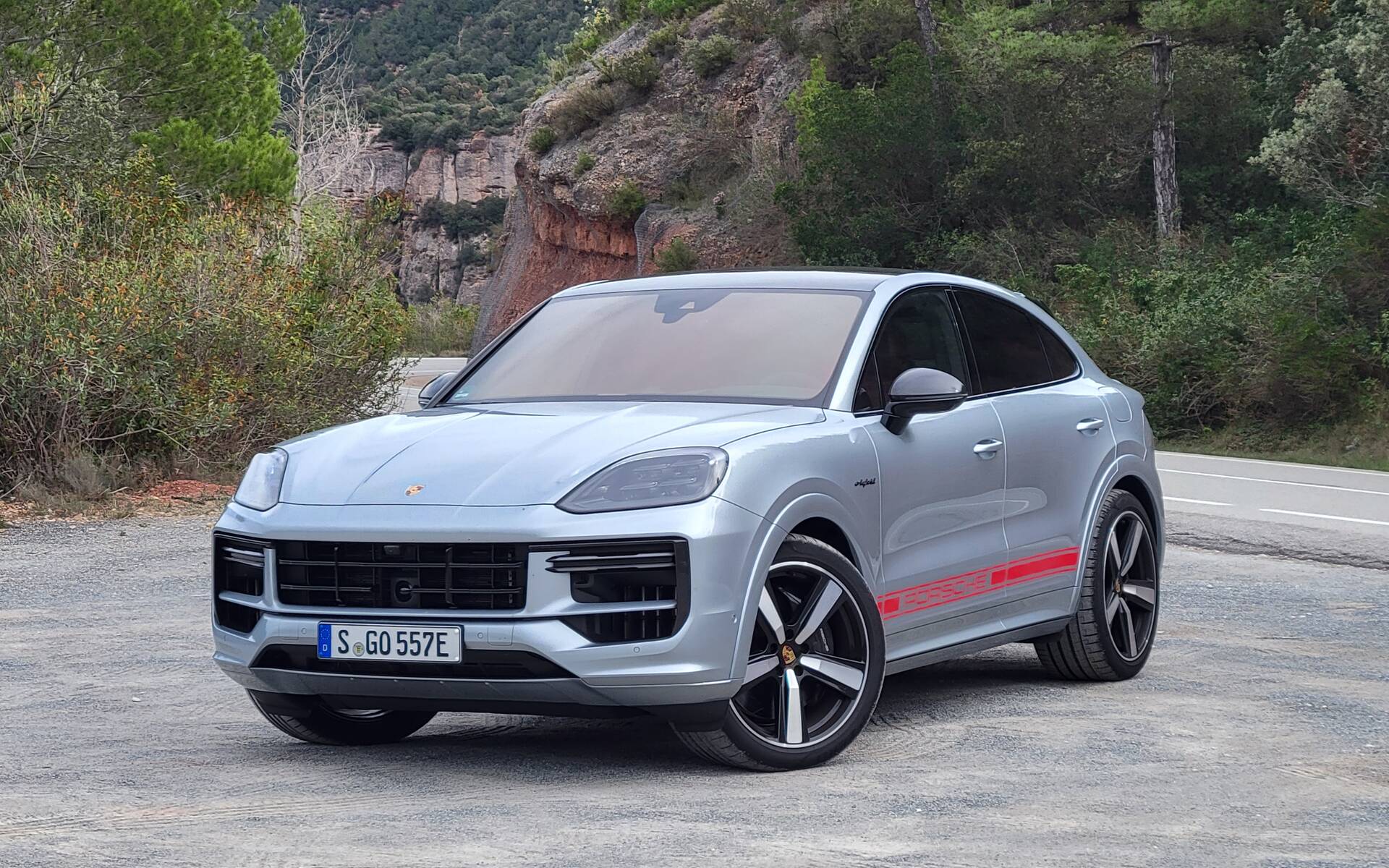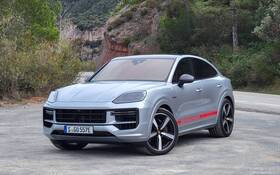2024 Porsche Cayenne S E-Hybrid and Turbo E-Hybrid: Pairing Efficient Utility With Performance

| Strong points |
|
|---|---|
| Weak points |
|
The Porsche Cayenne range may not be as extensive as that of the 911, but it still impresses with a choice of gas engine displacements, traditional and coupe body configurations, and multiplying hybrid variants that try to meet the many needs of Porsche enthusiasts that have surrendered to the SUV lifestyle. The Cayenne family now includes three plug-in hybrid models: the E-Hybrid, the S E-Hybrid and the Turbo E-Hybrid.
The Car Guide travelled to Barcelona, Spain, to drive two of the three variants in the Cayenne's hybrid clan: the S E-Hybrid and the Turbo E-Hybrid, both of which have perfected the art of combining the versatility of an SUV suitable for 100% electric city driving with Porsche’s signature performance.
- Also: Porsche Unveils New 2024 Panamera With More Performance, Enhanced Hybrid Tech
- Also: Podcast: Japan Mobility Show, 2025 Subaru Forester, 2024 Hyundai Santa Fe and more!
More of ... Everything!
For 2024, the entire Cayenne range receives a series of improvements. A few exterior iterations and LED matrix headlamps are among the cosmetic enhancements on the list. Inside, the Cayenne 2024 sees its dashboard remodeled. The gear lever has moved from the centre console to the dashboard, and there’s a new 12.6-inch curved instrument cluster behind the steering wheel. The S E-Hybrid variant is powered by a 3-litre twin-turbo V6 combined with an electric motor that has been upgraded to output 512 horsepower and 553 lb-ft of torque.

The new Turbo E-Hybrid (formerly Turbo S E-Hybrid) combines the 4-litre twin-turbo V8 with the same electric motor. The internal combustion engine has received significant technical upgrades, along with two brand new turbochargers. The result is a staggering 729 hp and 770 lb-ft of torque, crowning the Turbo E-Hybrid as the most powerful Cayenne ever conceived.
The disappointing bit about the outgoing hybrid Cayenne hybrid was electric range. With a larger 25.9 kWh battery, the S E-Hybrid model can now travel up to 90 kilometres in all-electric mode according to the European WLTP standard. This is reduced to 82 kilometres with the heavier Turbo E-Hybrid version. While official EPA range figures have not been released, we can expect 70 kilometres for the S E-Hybrid and 64 kilometres for the Turbo E-Hybrid. Needless to say, this is a considerable leap from the 27 kilometres that the previous Cayenne E-Hybrid delivered.

An Eccentric King with a Heavy Crown, An Agile and Level-Headed Prince
The Cayenne Hybrid has also received modifications to its adaptive air suspension. This is critical, because with the Turbo version tipping the scales at 2,570 kg, maintaining the beast's manoeuvrability can become a colossal task. On the track, although the efforts made by this component are appreciable, the Cayenne's weight is noticeable. The brake pedal can also be unpredictable in terms of feel in these demanding conditions, but the gigantic calipers fitted to the Cayenne Turbo E-Hybrid worked efficiently throughout our sessions despite this minor snag.

The performance factor with this version is surreal and can be intimidating. But the S E-Hybrid proved to be more rational, both in terms of performance and handling. With its V6 engine weighing less at the front, this version seemed more balanced overall, all with a (very) adequate 512 horsepower...
Top Assembly Quality, Compromised Cargo Space
Despite all this performance talk, the hybrid Cayenne is still a “family” SUV. Its cabin is a comfortable, technologically advanced haven assembled in the Porsche way, with almost impeccable precision. Unlike some of its rivals, it doesn't offer a third-row option, but rather a cargo area whose space is compromised by the battery underneath it. For comparison purpose, a combustion-powered Cayenne S offers up to 772 litres of cargo space. This volume drops to 627 litres in the S E-Hybrid model with traditional body configurations. With the coupe configuration, only 434 litres remain.

We have long criticized Porsche's infotainment system for being complex and unintuitive. But our prayers seem to have been answered with the version we tested in the Cayenne. We found the interface to be much simpler, with less complex menus, but without any loss of functionality. An optional screen can be added on the passenger side; a feature we find rather unnecessary.

In the End
Having saved the brand in 2002, the Porsche Cayenne has since played many roles, and set the benchmark for hybridization for the automaker. Its all-electric counterpart is planned for 2025, and will probably arrive here in 2026.
For the time being, those who want a part-time electrification and opt for hybrid variants will get SUVs that compromise very little and offer more power and electric range than ever before. With a starting price of $113,700, the S E-Hybrid variant struck us as well-balanced, with a healthy dose of sportiness far superior to similar rivals. But those who want to collect horsepower and get the bragging rights that come with driving the most powerful Cayenne in the range can opt for the Turbo E-Hybrid. It starts at $171,200, but it is much cheaper and more powerful than the ICE-only Turbo GT variant.











